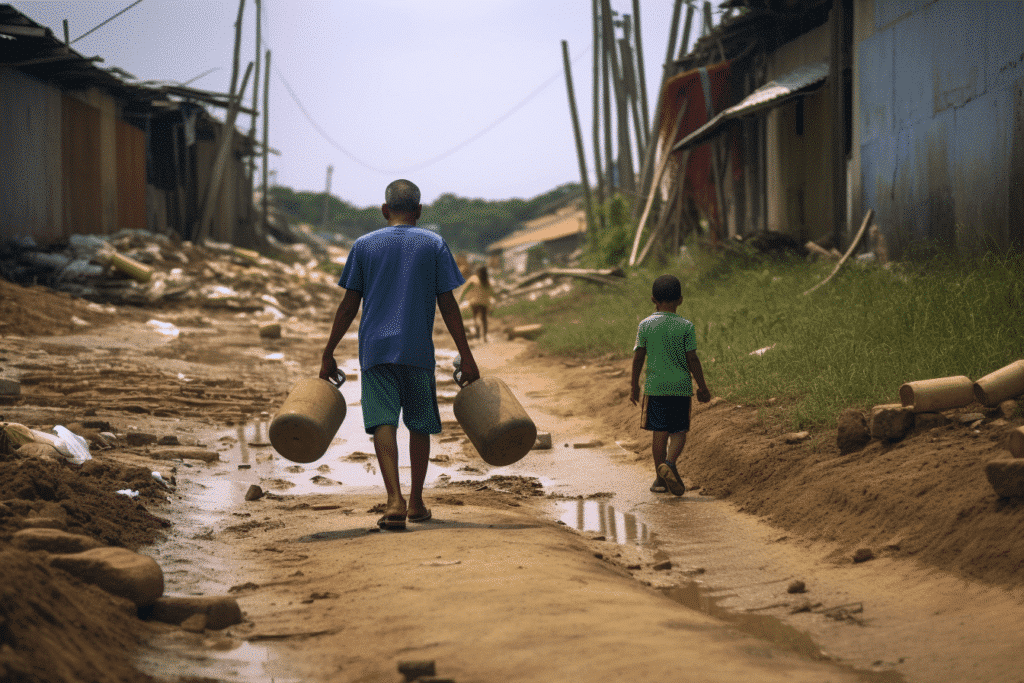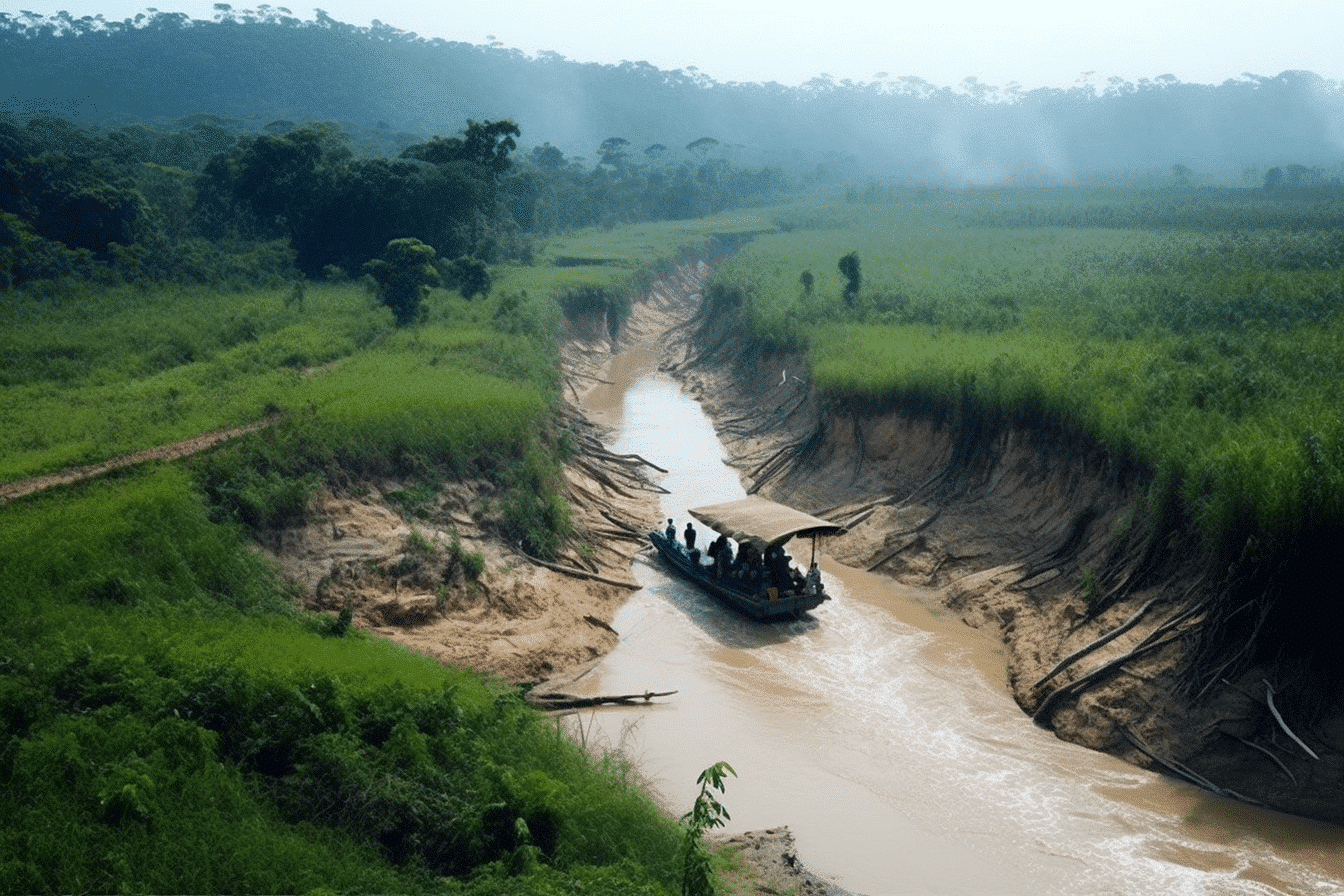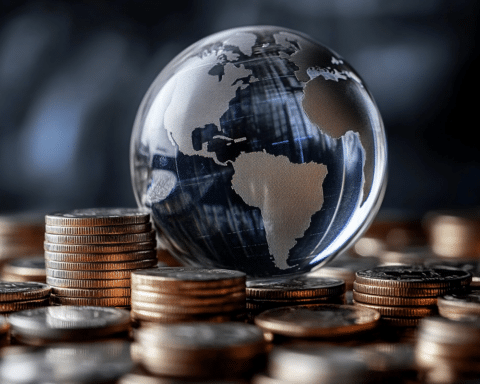In a secluded part of the Amazon, Brazilian ecologists are attempting a novel strategy to tackle the disastrous effects of bad governance. By managing a specific tract of land to encourage involvement from the local population and scientists, they aim to preserve the largest tropical rainforest in the world.
The mission is a grand one; to counteract the negative forces that have obliterated 10% of the forest in less than forty years and to develop a model that can be replicated throughout the Amazon.
Their initiative started with a four-month exploration trip along the Juruá River in 2016. On this trip, researchers engaged with approximately 100 communities that, at first glance, appeared to be quite similar with their wooden stilt houses lining the riverbanks. However, they soon noticed striking disparities in their living conditions.
To understand this situation, it’s crucial to know that about 29% of the Amazon, a region nearly three times larger than California, consists of unprotected public lands or public lands with no available general information. This is according to an Amazon Institute of People and the Environment study.
These particular areas are more susceptible to deforestation. Land thieves often displace traditional communities from these lands, clearing them with the hope of government recognition of ownership, which typically happens.
“Inside the protected zones, many positive developments are happening. Outside them, however, it seemed as if we were 40 years ago,” explained João Vitor Campos-Silva, a tropical socio-ecologist.
Campos-Silva and his fellow researchers noted that the section of the river known as Medio Juruá, located near Carauari, had an impressive social organization, and the locals sustainably managed its fish and forest products like acai. The territory is recognized as “extractive reserves,” public lands where inhabitants can fish and cultivate certain crops.
But in numerous areas outside these reserves, people were under the control of self-appointed landowners, said Campos-Silva. Whole communities are deprived of access to lakes and the right to fish for their sustenance. Land ownership needs to be clarified, leaving the people in a state of uncertainty.
In response to these findings, the researchers proposed designing a conservation model based on a “basin scale.” Under this model, communities could responsibly harvest forest products and fish while protecting the forest instead of relocating to urban areas or resorting to illegal activities like unlicensed logging and overfishing.
The non-profit Juruá Institute was subsequently established, and a 13 km (8 miles) rainforest property along the Juruá River was procured. This property houses around 20 lakes, some of which have a high potential for breeding the highly sought-after pirarucu, the largest freshwater scale fish in the world, which can grow up to 200 kilos (440 pounds).
As stated by Campos-Silva, the aim is to encourage top-tier science rooted in collaboration with the region’s inhabitants.
Near the Institute’s property are 12 communities of former rubber tappers, referred to as “ribeirinhos” or river people. In the past, these people were drawn to the Amazon by the prospect of rubber tree income. Today, their primary income source is pirarucu, the management of which has proven to be sustainable and has facilitated a species revival. Moreover, it provides income without necessitating deforestation and its associated biodiversity loss.
With deforestation hitting a 15-year high recently, driven by land thieves and escalated under the presidency of Jair Bolsonaro, the importance of the Amazon rainforest cannot be overstated. Covering an area twice the size of India, the Amazon rainforest is a significant carbon store and plays a crucial role in mitigating climate change. However, due to extensive deforestation, the eastern Amazon has become a carbon source, not a sink.
The institute implemented a steering committee and initiated a series of public forums named the “Community of Dreams” to encourage riverine communities to participate in governance and prioritize improvements.
To avoid biases related to gender and age, they organized separate groups for women, men, and youth, according to Campos-Silva.

Fernanda de Araujo Moraes, president of the river communities’ Association, stated that the primary objective is to prevent river people from migrating to Amazon cities where low-skilled unemployment and drug-related violence are rampant.
The people in her community of Lago Serrado prioritized 24-hour electricity, currently only available for three hours a day. The youth opted for fishing training.
Moraes believes this type of collaboration offers the quickest path toward progress. “The Institute and we share the same goal of improving people’s lives,” she remarked as she tended to her baby daughter at home. She noted that the government does not always align with their objectives.
José Alves de Morais, a resident, expressed optimism about the project. “This initiative is unprecedented in the Amazon and Brazil. If successful, which I believe it will be, it will grab people’s attention,” he said.
Morais works as a lake keeper, looking for potential intruders who may attempt to fish or cut down trees. His family is eager to participate in the institute’s pirarucu fishing management, pending federal approval.
On the scientific side, the institute has constructed a houseboat and a wooden house to accommodate up to 20 researchers who can spend their time studying various aspects of the Juruá River. Some are researching the uakari monkey, while others are investigating the factors contributing to successful social structures in the region. A program, Forest Scientists, was established to equip local high school students with field collection, data systematization, and report preparation skills.
The project, spearheaded by Carlos Peres, a professor of tropical conservation ecology originally from the Amazon and now at the University of East Anglia in the UK, received recognition from a Swiss non-profit. Peres and three other scientists were awarded the Frontiers Planet Prize, which comes with a $1.1 million prize. This will be reinvested into the project, which has already received backing from organizations like Synchronicity Earth, National Geographic, and the Rolex Perpetual Planet Project.
The award-winning study, co-authored by Campos-Silva and other researchers, revealed that communities residing within protected areas had better access to healthcare, education, electricity, basic sanitation, and a more consistent income than communities in undesignated areas. They discovered that only 5% of adults in protected areas wished to move to a city, compared with 58% in unprotected areas.
The research suggests that in resource-limited tropical countries, it’s possible to achieve conservation while benefiting local communities by empowering them.
As the Institute’s scientific director, Peres hopes to inspire solutions across the Amazon region by merging traditional knowledge with Western scientific models.
“We may not have all the answers,” he stated, “but we do have the audacity to attempt to tackle these challenges.”
In a world grappling with the dual crises of climate change and social inequality, initiatives like the Juruá Institute provide hope. By combining science, social justice, and an unwavering commitment to protecting the environment, they strive to preserve the precious Amazon rainforest while uplifting the communities that call it home. This ambitious project is not only changing lives but also fostering a model of sustainable development that has the potential to inspire similar efforts around the world. As long as we dare to confront these issues head-on, there is always a promise of a better future.




